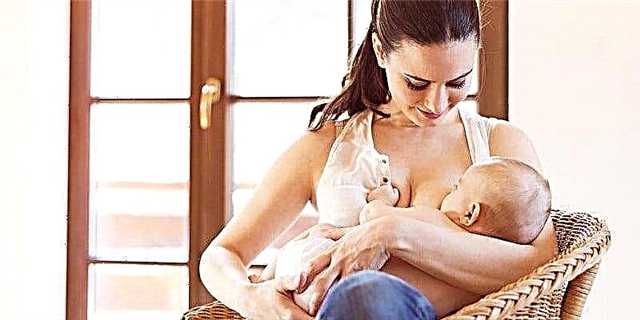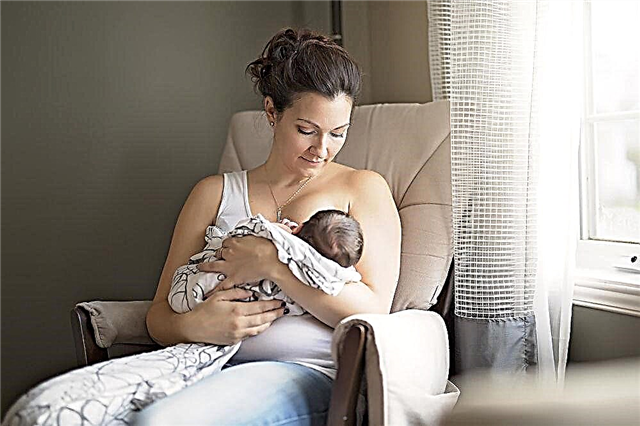Pediatricians and other doctors are very fond of compiling tables and examining the child using them. Literally everything is subject to verification: height, weight, head circumference, test results, the number of spoken words. What should a child be able to do per year, what indicators should he strive for?

First birthday
Norms that a child should be able to do at 1 year old
A one-year-old child of responsible parents must definitely come to many specialists for examination. A pediatrician, neurologist, ophthalmologist, surgeon and others carefully examine the baby, weigh it, measure it and ask mom or dad many questions. They ask what the child does a year, how he sleeps and walks, how many words he already speaks. These questions are not idle - experts use them to determine the level of mental and physical development of the baby.
By what a child can do at this age, they judge whether he has serious developmental disabilities or conclude that all indicators are within the normal range, and there are no deviations. There are special tables with indicators of standard height and weight, head and chest circumference. These tables are used to assess the physical condition of the child. Doctors evaluate psychomotor, social and everyday skills according to the development calendar - a special list in which all skills are deciphered in detail. The baby should master them by the first birthday.
For boys and girls, there are differences in physical norms. This is due to the fact that, according to statistics, boys are usually born larger than girls. Therefore, their growth and weight indicators are slightly higher. But girls develop emotionally and psychologically faster, they are more likely to gain their vocabulary. For the harmonious development of children, it is necessary to show care and trust in children of any gender. For the girl, special attention should be paid to caring, the boy should be given more trust, and given scope for independent choice.

Boys and girls need care differently
Basic skills of children per year
Before evaluating the various indicators of a child, it is necessary to remember the rule: all children develop individually. Their height and weight are often associated not only with lifestyle and amount of food, but also with nationality and genetic inheritance. According to Dr. Komarovsky, it never hurts to take a look at yourself and your spouse before weighing and measuring the baby's height.
Physical development
Average weight and height for boys and girls by 12 months
| Baby gender | Weight, kg | Height, cm | ||
|---|---|---|---|---|
| Average rate | Range of norm | Average rate | Range of norm | |
| Boys | 10,8 | 9,4-11,9 | 75,7 | 73-79 |
| Girls | 10,1 | 9,0-11,3 | 74,8 | 72-77 |
The weight of the child from the moment of birth increases by 3-3.5 times. The monthly weight gain decreases to 300-350 g. The monthly increase in height also decreases, by the year it is already 1.5 cm. The one-year-old baby has got 4-8 milk teeth, which he successfully cleans with his own toothbrush with a drop of toothpaste.
The period of active crawling is gradually replaced by bold attempts to learn to stand independently and take the first steps. In this matter, all babies behave differently. Some a year not only walk, but run quite successfully, someone still does not let go of their mother's hand, they are afraid to step back from it. Holding hand, the child tries to go down and up the stairs. Children climb in and out of the sofa on their own.
Important information! At this age, it is especially important to ensure the safe movement of the child in space: do not leave alone in a room with open windows, fix cabinets and racks so that they do not tip over, remove wires and secure outlets.

Physical development
Household skills and habits
The child shows independence: he picks up a spoon and a cup, tries to eat and drink. He takes off and puts on clothes that lend itself to him: a hat, slippers, socks. The kid independently holds and bites off pieces of bread, banana, apple. He learns to observe the rules of hygiene: he washes and wipes himself with a towel, takes a toothbrush in the handle, makes attempts to get acquainted with the pot.

Holds a spoon on his own
Psychomotor development
At 1 year old, children learn about the world with the help of tactile sensations, and also, when tasting objects, they still pull everything into their mouths. The movements become meaningful, at the request of an adult, the child raises and lowers his arms and legs when he is dressed, picks up a comb and brushes himself like a mom or dad. At one year old, children can perform the following actions:
- open and close cabinets and doors, lift lids and open boxes;
- pull out drawers;
- pouring and drawing water;
- throw the ball, kick it with your foot;
- pull toys by the string, turn them over;
- play in the sandbox - pour sand into a bucket with a spatula, pour it back in attempts to make a cake.

Ball game
Social behavior
The age when a child turns 1 year old is the time for active manifestation of meaningful emotions. The child, through crying or laughing, learned to express his feelings and talk about his needs. Previously, all issues were resolved by shouting. In addition, the following skills were formed:
- reacts with interest to new objects and faces in the environment;
- recognizes his loved ones at a distance;
- examines photographs, finds familiar faces, points with a finger;
- grimaces, makes faces, shows tongue;
- is able to repeat sneezing and coughing for adults;
- understands the prohibition addressed to him, knows the meaning of the word "no";
- shows familiar animals (dog, cat) or objects in books;
- listens and moves to rhythmic music, tries to "dance";
- knows what the TV remote control and telephone are for, makes bold attempts to grab and use them;
- refuses to eat if he is not in the mood or does not like the dish;
- meets mom or dad on the doorstep, waits for them at the door.

Playing with the phone
Motor skills
The development of motor skills must be given enough attention to develop speech abilities. One part of the brain is responsible for these two skills. Therefore, at this age, the baby must confidently and firmly hold objects in his hands, transfer them from one hand to another. The following games develop this skill well:
- building a tower from cubes;
- assembling simple pyramids and playing sorters;
- selection of inlay figures for the desired shape;
- games with ball and ordinary plasticine, modeling dough;
- after the game - cleaning toys in a box, container.
It is good for toddlers to purchase or print simple coloring pages with large details and put soft pencils or wax crayons in their hands. This is how the large and fine motor skills of the fingers are trained.

Assembling the pyramid
The development of the baby's speech at the age of one
Active movements and new skills of a one-year-old baby are transformed into words and give an impetus to the development of speech. The first syllables, babbling, usually appear by six months. Skills are improving month after month. Syllables are repeated, become conscious. The kid no longer just repeats the sounds that he knows, but also knows how to imitate adults and reproduce new ones. By the age of 11-12 months, the first conscious words appear in the lexicon: "mom" and "give." Babies usually have the following speech skills per year:
- repeat syllables pronounced by adults;
- know and respond to their name;
- understand and fulfill requests: sit down, come, take;
- say goodbye, say goodbye and wave a pen;
- vocabulary consists of 8-10 simple words (buy-by, baba, mom, dad, bb, kitty, etc.).
In addition, the child points with his finger at objects that the parent asks to show. Understands what the word “no” means and knows the names of loved ones, sister or brother.
There is no clear line between norm and lag. It is difficult to fix speech therapy problems at this stage, since the following factors have a great influence on speech development:
- gender of the child - it is believed that girls develop earlier than boys and pronounce the first words at an earlier age;
- genetic characteristics - late maturation of the parents' speech apparatus is likely to affect the development of the baby;
- individual sound environment - the ability to reproduce sounds and switch to conscious speech will only be in the baby with whom they are actively talking at home; parents should talk not only with the child, but also among themselves, then he will be able to imitate and repeat new words after them, learning their meaning from the behavior and actions of adults;
- individual characteristics and temperament of the baby - quiet and calm introverts accumulate a passive vocabulary, and sociable extroverts actively reproduce their abilities to others from an early age.
Important information! According to the child's favorite words, one can determine his future abilities, or rather, their general orientation. If the kid pronounces nouns more often, this means that his sphere of interests will be in the humanitarian field. If he likes to repeat verbs, he will have a penchant for technical and exact sciences. You can keep a diary where you write down your favorite and frequently repeated words of the little one, and over time, evaluate how true this statement is.

Speech development
Possible problems, how to solve them
The norms and averages must be listened to and taken calmly. They show the big picture for children who live and develop in different environments. Deviations from these norms are most often insignificant - sooner or later the child will gain weight, grow to a size that the district doctor will like, and with the maximum probability will learn to walk and talk.
To argue that developmental problems do not exist at all is extremely wrong and unforgivable. The task of the parents is to observe, engage and move in the right direction with the child. If you have questions, if it seems that the baby is still lagging behind or is not getting enough, consult a doctor. This is exactly the case when it is better to play it safe.
Symptoms of delayed speech development
If a child at 1 year old does not pronounce syllables, does not try to express his emotions and feelings by speech, and the sounds do not look like trying to speak, this is a reason to contact a specialist. Also, parents should be alerted by the circumstance in which the babbling disappeared, i.e. he was up to a year old, and then the baby stopped talking in his "incomprehensible" language. The reasons may be as follows:
- mental - from minimal disturbances in the brain to a severe degree of dementia;
- hearing impairment (congenital and acquired);
- poor language environment;
- pathology of the articulatory apparatus.
To exclude terrible diagnoses and diagnostics, the baby must be shown to specialists: speech therapist, neurologist, psychologist and otolaryngologist. If the examination does not reveal any pathological disorders, it is necessary to use preventive methods to develop speech skills. The most basic ones are as follows:
- daily communication;
- meaningful conversation without distorting words and sounds, excluding lisping and diminutive suffixes from the lexicon;
- do not scold for mistakes, but calmly correct;
- read your favorite books aloud;
- not to anticipate the baby's desires, to wait for a request from his side to submit or pour;
- ask questions and listen carefully to the answer, do not dismiss his questions or keep silent;
- develop fine motor skills - speech is at your fingertips; assemble a designer, crumple plasticine in handles, pour buttons and sort out large balls;
- learn to inflate soap bubbles - to develop an articulatory apparatus.

Bubble
It is necessary to evaluate the skills of a child per year without looking back at the neighbor's kid, because all children develop in different ways. First of all, it is necessary to compare development indicators with similar data for the past period and evaluate the dynamics, track whether there are changes and improvements. In parallel with this, spend more time with him and develop, then a positive result will not be long in coming.



